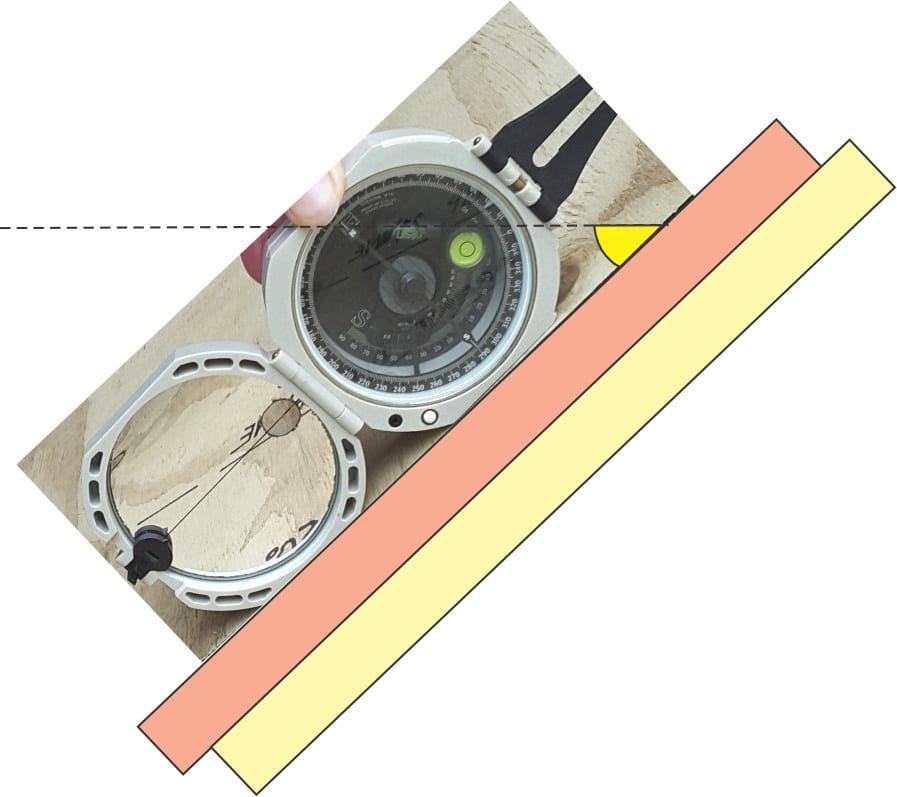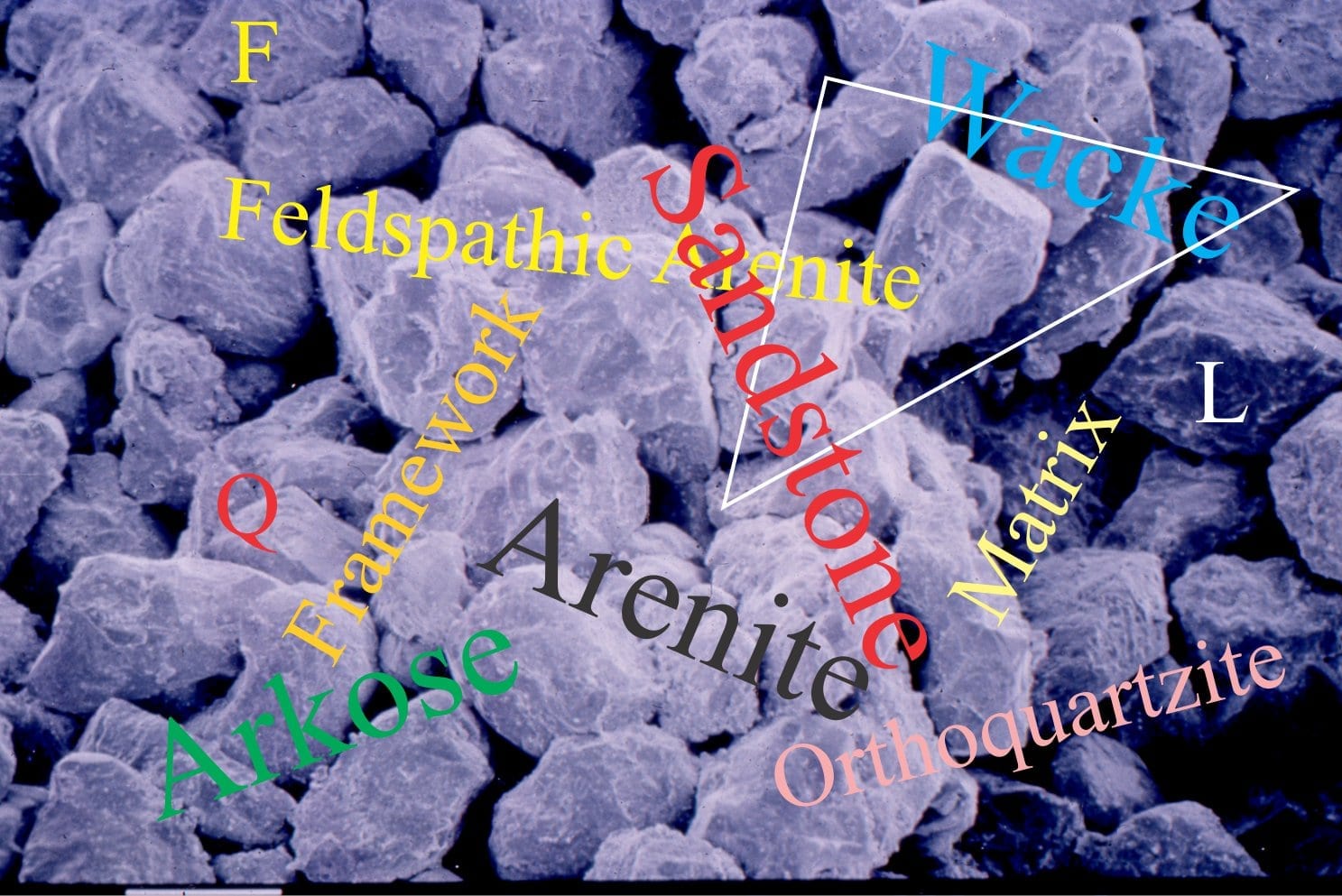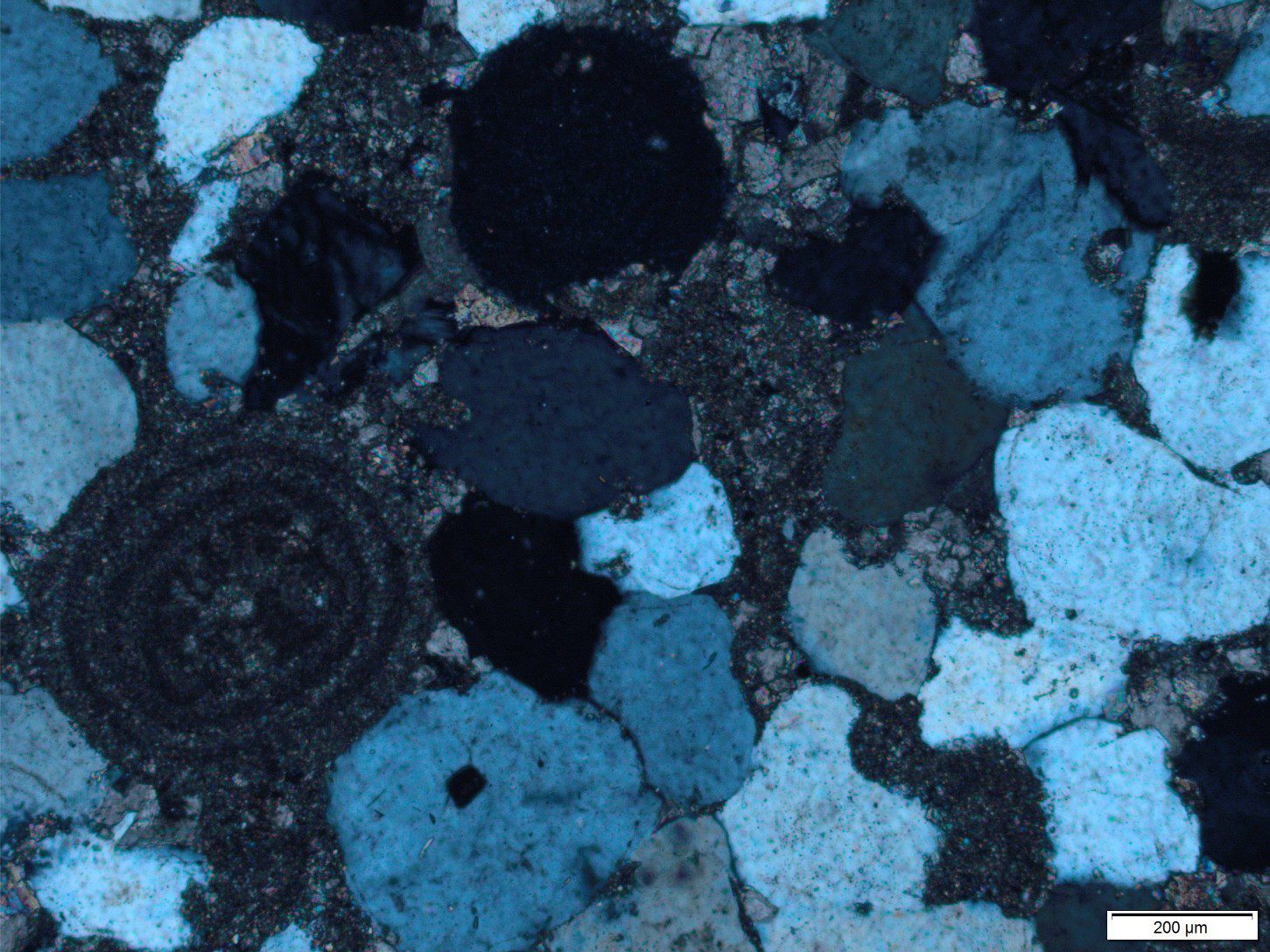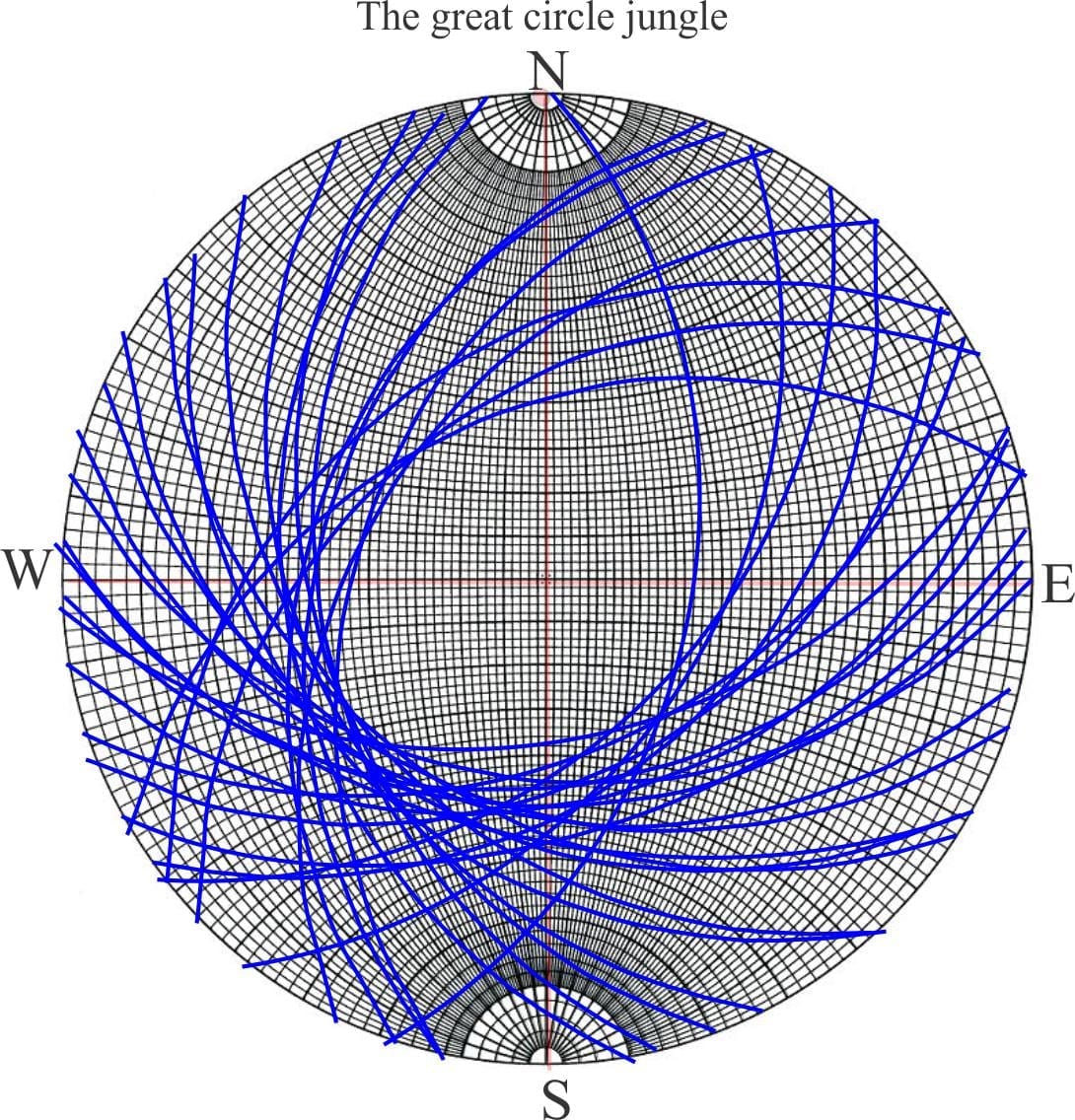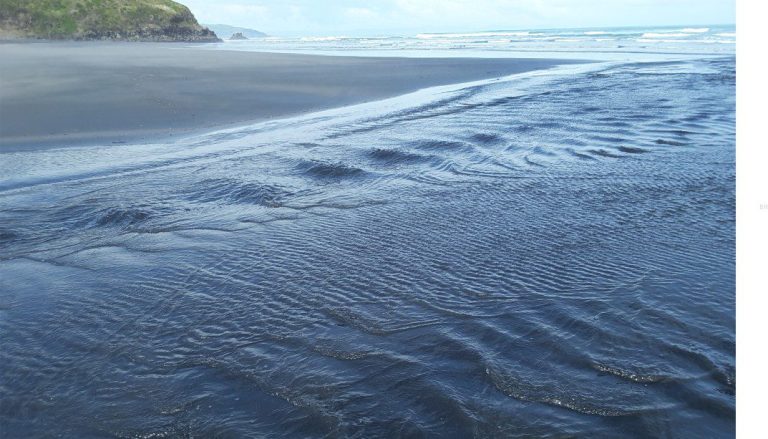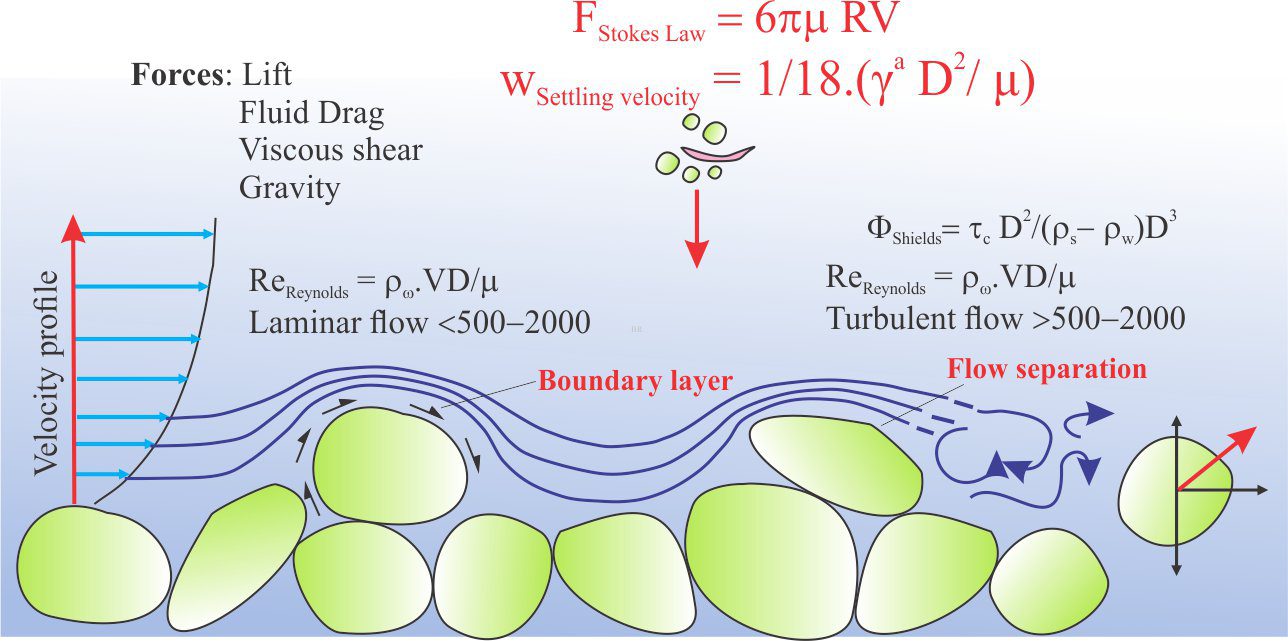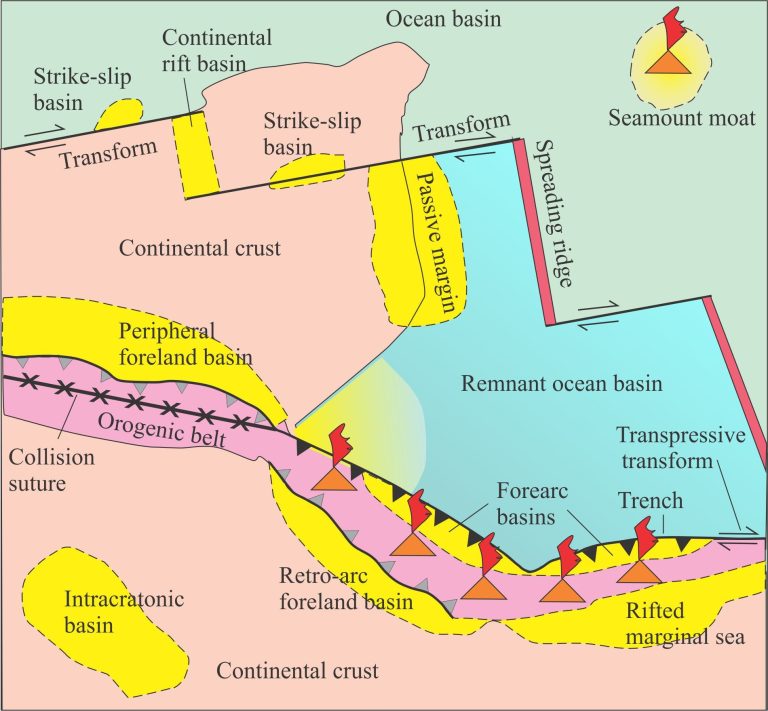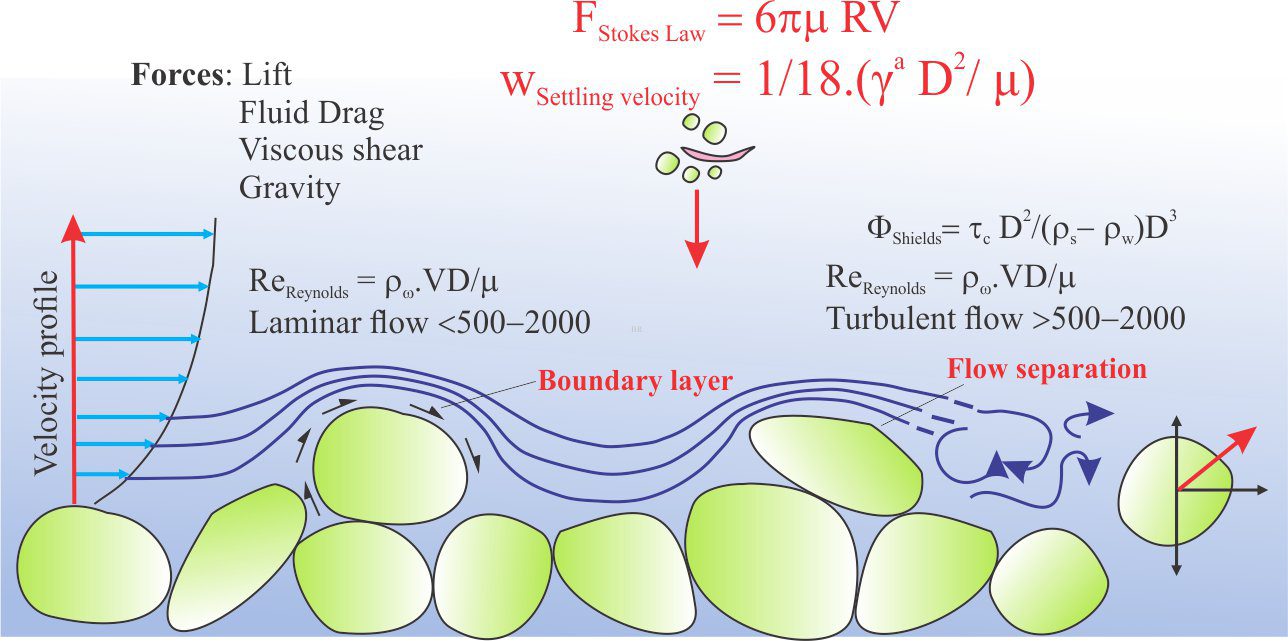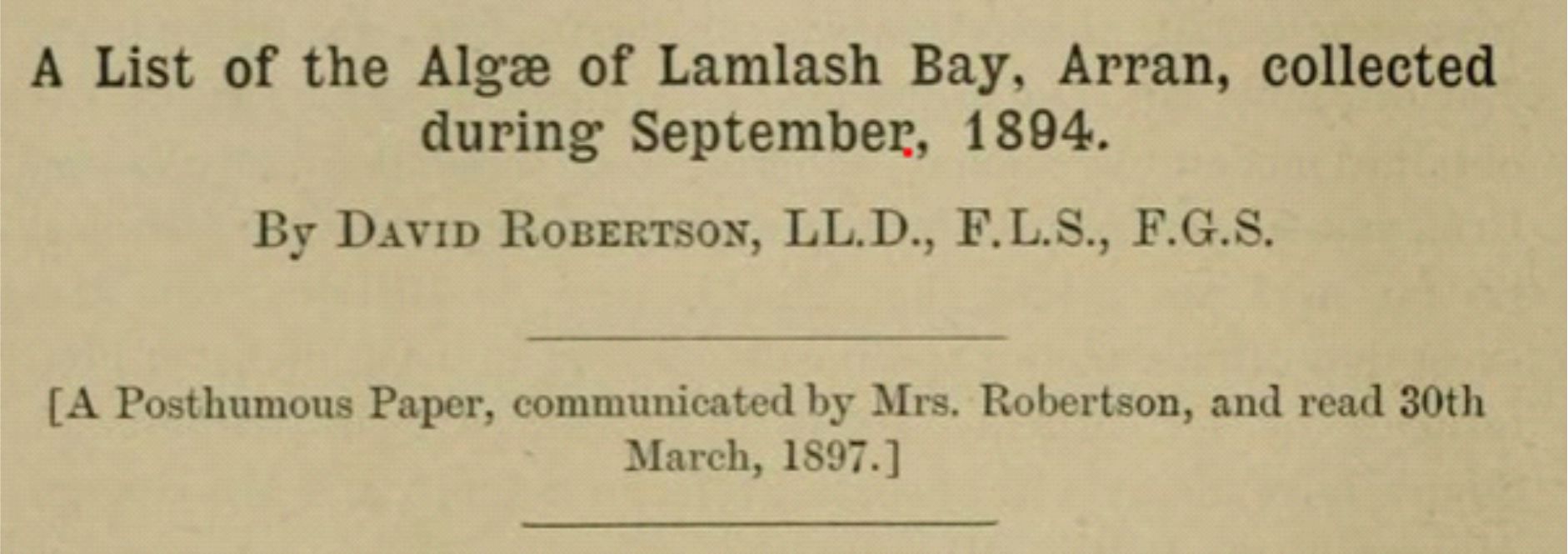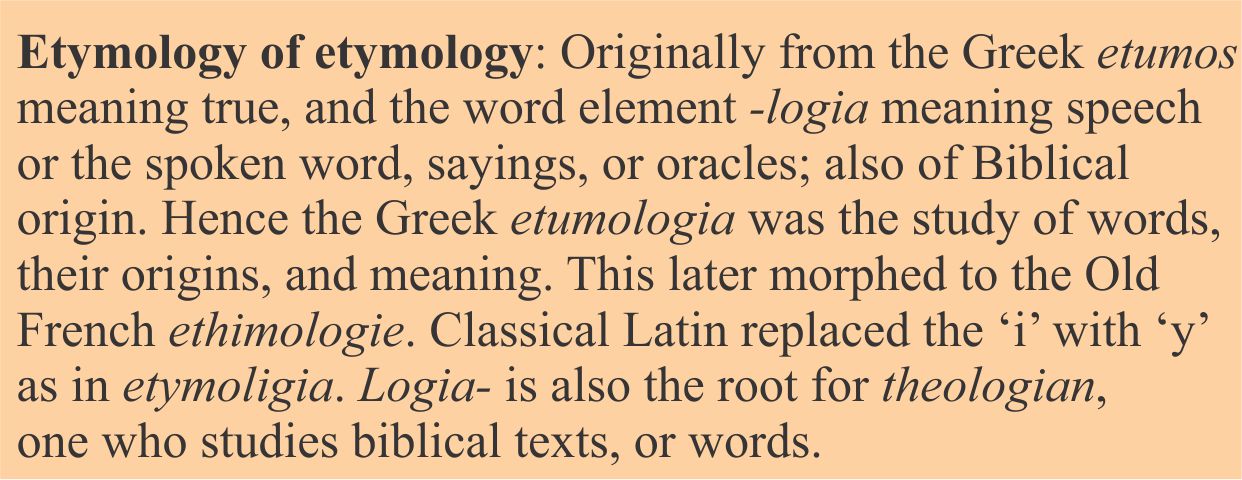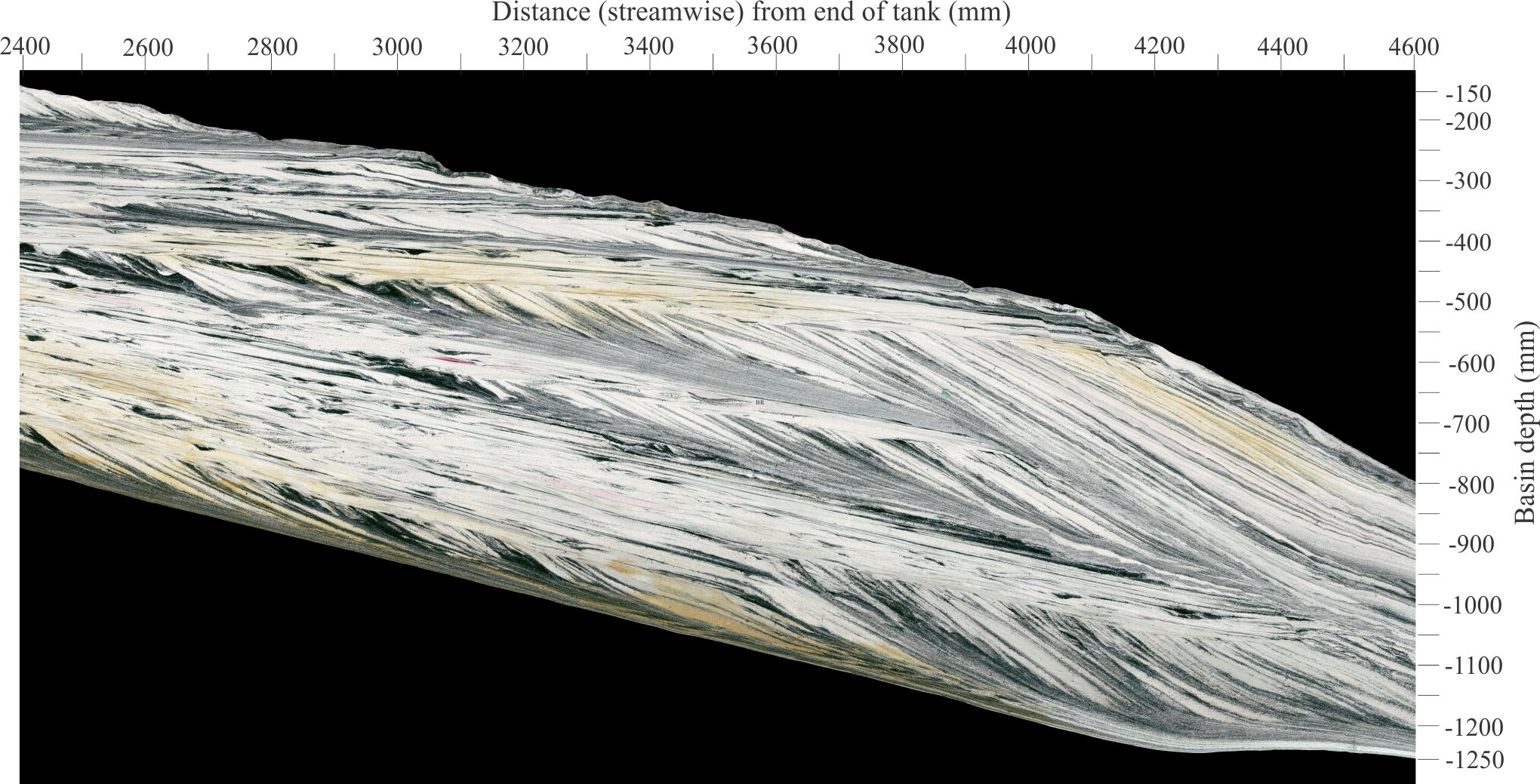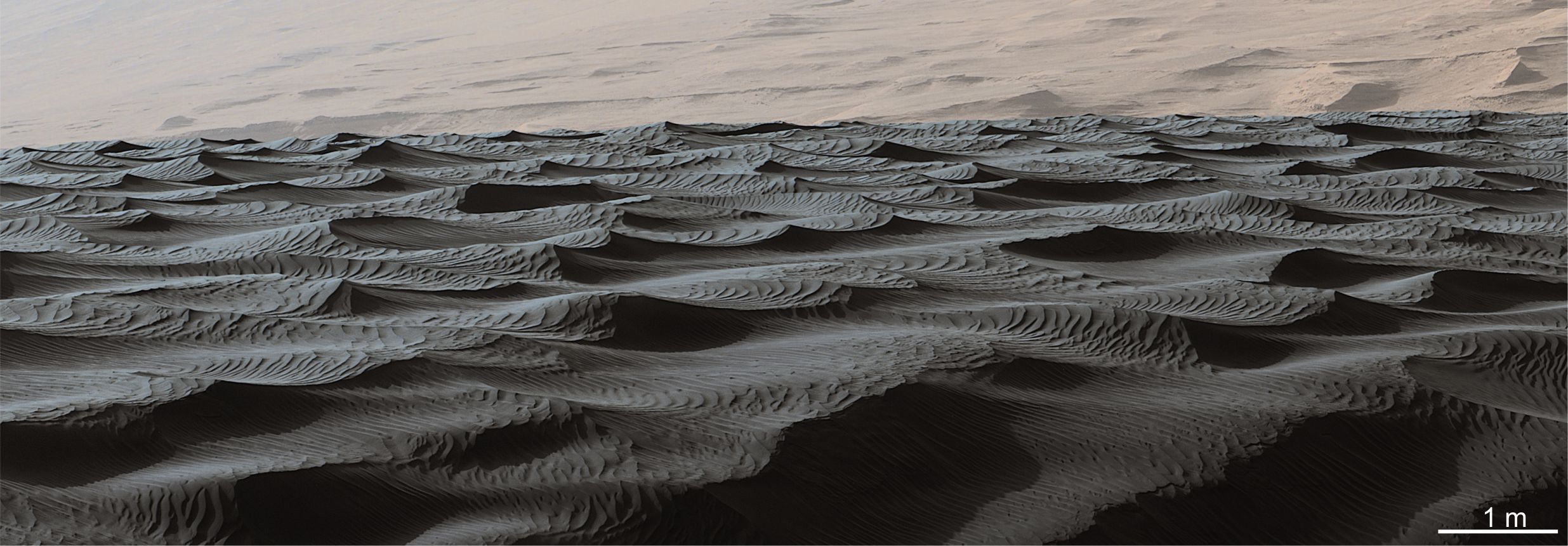
How do we know there are sedimentary rocks on Mars?
Some of the criteria that justify our inclusion of sedimentary rocks in Mars geology may seem blindingly obvious. Initial questions like Are rocks exposed on the Martian surface? or are there ancient sedimentary rocks? may appear trivial, and yet it is only 50 years ago that the Viking Mission orbiters produced the first complete coverage of Mars’ surface with images that resolved surface details at 150-300 m, complimented by the first successful lander missions –Vikings 1 and 2 in 1976. These missions gave us the first detailed look at Mars’ surface. Several orbiter and lander-rover missions later, have given us a multitude of images and associated data on Mars surface materials. Views range from landscape panoramas to hand-lens (millimetre) scale photos of sediment textures. Instrumentation including spectrometers, chromatographs, and X-ray fluorescence provide analyses of sediment and rock composition. Ground-penetrating radar imagery acquired by Perseverance and Zhurong rovers (RIMFAX and RoPeR respectively) provides a first peek at shallow subsurface structures.
The question whether sedimentary rocks exist on Mars is even less trivial when we consider the implications of the word rock. Rocks are hard; they have strength and cohesion (e.g., shear strength) when compared with soft, loose sediment. Sedimentary rocks begin life as loose granular material as in mudrocks, sandstones and conglomerates (of any composition), or as dissolved solids that precipitate stratiform mineral deposits like sulphates, halides, silicates, and carbonates (i.e. chemical sediments).
The hardening of loose, soft sediment into rock is called induration; the physical and chemical changes that occur during induration are called diagenesis. On Earth induration and diagenesis of sediment involve a broad range of physical and geochemical conditions such as precipitation of cements (e.g., quartz, clays, calcite, dolomite), and the dissolution of labile grains and minerals, usually accompanied by mechanical compaction. Compaction can take place in dry or wet conditions. However, the formation of cements requires aqueous fluid flow as the primary mechanism for transporting dissolved mass through the granular materials. Likewise, precipitation of chemical sediments requires a fluid. On Earth, this fluid is water based.
Thus, the recognition of (indurated) sedimentary rocks on Mars has profound consequences; it means that water-based fluids must have been present at some time either as surface water or (subsurface) groundwater during the transformation from loose, soft sediment to rock (to varying degrees of hardness).
Analysis of the mid 1970s Viking Mission images provided the rationale for M. Malin and K. Edgett (2000) to compile one of the first lists of criteria directed at recognition of Mars sedimentary rocks. More recent high-resolution imagery from multiple satellite orbiters and mobile landers (rovers) now provide enough information to compile detailed lithostratigraphic profiles of sedimentary strata at localities like Gale and Jezero craters. Edgett and Sarkar (2021) have compiled a more encyclopedic account of the recognition criteria for Martian sedimentary rocks.
Interpretation of Mars sedimentary rocks is fundamentally uniformitarian, which means we can also apply Steno’s principals and Walther’s Law of lithofacies succession. Interpretation of Martian paleoenvironments, although still in its infancy (it really only began in 2000), is based on bed geometry, sedimentary structures, stratigraphic trends, and to a much more limited extent rock composition; paleontology plays no role in these determinations (yet!).
Evidence from afar – satellite orbiter images
Present conditions
The modern Martian surface is wind-blown and covered by a veneer of loose sediment. We know this from orbiter images that show extensive fields of dune-like structures across crater floors, basins, and lowland plains. Time-series images show these structures migrating. Dune geometry is analogous to terrestrial sand dunes, including barchan and longitudinal forms. There is also evidence for transport of loose sediment in dust storms. The presence of dune and ripple bedforms has been confirmed from images taken by rovers – the bedforms show morphological features such as lee (avalanche) and stoss faces, typical of fluid transport of a granular bedload.
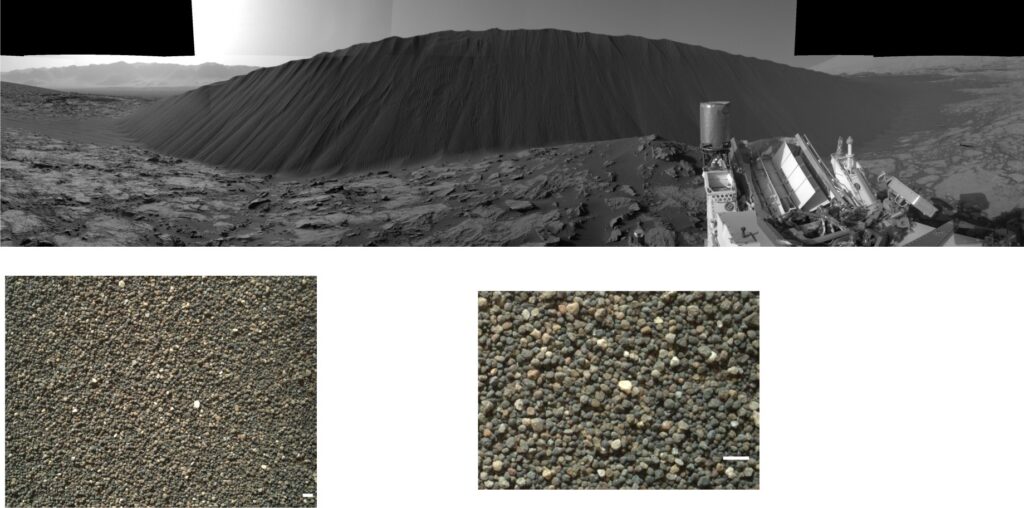
The inset shows a MAHLI ‘handlens’ view of sand loose grains associated with the wind-blown deposits. The sand is well sorted. The view is 3.6cm by 2.7cm. Bar scale bottom right of inset is 1.125 mm. Image credits: NASA/JPL-Caltech/MSSS
Gravel strewn across the surface is likely the product of deflation. Localized boulder accumulations at the base of steep slopes, and entrapped in gullies, valleys, and canyons are testament to mass wasting of hard rock – volcanic and sedimentary, that include rockfalls, landslides, and possibly debris flows, some of which may have been triggered by groundwater piping. Boulder and finer grained deposits also radiate as ejecta from impact craters. Wind sculpting on steep slopes and boulders also indicates some degree of induration.
Evidence for ancient sedimentary rocks
The following criteria have been abstracted from Malin and Edgett (op cit. 2000), Grotzinger et al., 2011, Grotzinger and Milliken, 2012, and Edgett and Sarkar, op cit. 2021. These and additional publications cited throughout indicate the extent of research into the Martian world.
- Successions of shallow-dipping, layered rock, commonly 100s of metres thick exposed in crater, canyon and gully walls, the sides of valleys, and beneath mesas and buttes. At the resolution of available imagery, individual layers range from a few metres to 100-200 m thick; some higher resolution views show that thicker layers are composite. Layers have tabular geometry over many 10s of km. Layer periodicity is remarkably uniform. Layering can form in sedimentary (i.e., bedding), igneous (e.g., stacked lava flows, or compositional layering in intrusions), and the metamorphosed equivalents of all these rock types. Although not conclusive, the possibility of sedimentary layering seems most likely.
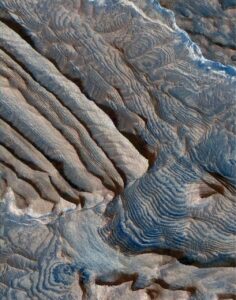
- Differences in rock mechanical strength and induration between successive layers are expressed across steep slopes and bluffs as stair-step landforms.
- Gradational or abrupt colour and albedo differences between successive layers; on Earth this commonly results from differences in textural and/or mineralogical composition such as successions of alternating sandstone-mudrock, and carbonates-siliciclastics-evaporites (see the image above).
- Angular discordances between layered successions, namely unconformities, channel-like discordances, discordances among large-scale bedforms, and impact-generated discordances.
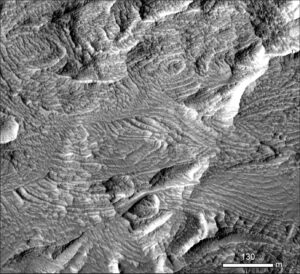
- Geomorphic features such as straight, sinuous, and braided channel-like structures. Map views commonly show dendritic patterns. Some highly sinuous channels are also associated with point bar-like concentric ridges that are analogous to terrestrial fluvial scroll bars. Some channels also appear to have fed large deltas and alluvial fans. Preservation of these linear structures as ridges is common on Mars – interpreted as inverted channels (there are analogues on Earth, for example in the Jurassic Morisson Formation, Utah; Hayden and Lamb, 2020, OA). The reason for this type of preservation is still debated – was it due to preferential lithification and deflation of surrounding materials, or channel fill sediment that was more resistant to subsequent erosion and deflation (e.g., volcanic debris), or ridge-top protection, or armoring by more resistant lithologies?
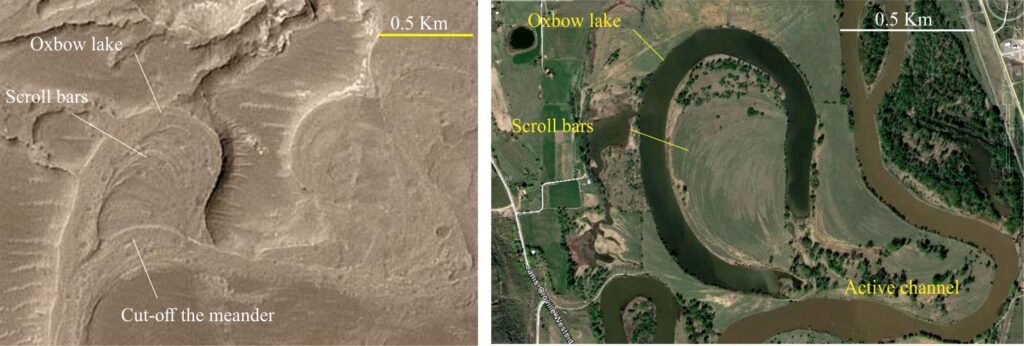
meander loops were cut off as the main channel moved to a shorter route, leaving stranded oxbow lakes. The pale brown, horizontal lines abutting the margins of the Martian loop are presently active sand dunes; the loops themselves are 4.1 to 3.7 billion years old (Noachian Period). Image credit: NASA/JPL/MSSS;
- Delta-shaped accumulations that internally consist of overlapping lobes, each connected to distributary-like channels and indicating episodic delta progradation. Iconic examples have been described in some detail in Jezero and Eberswalde craters.
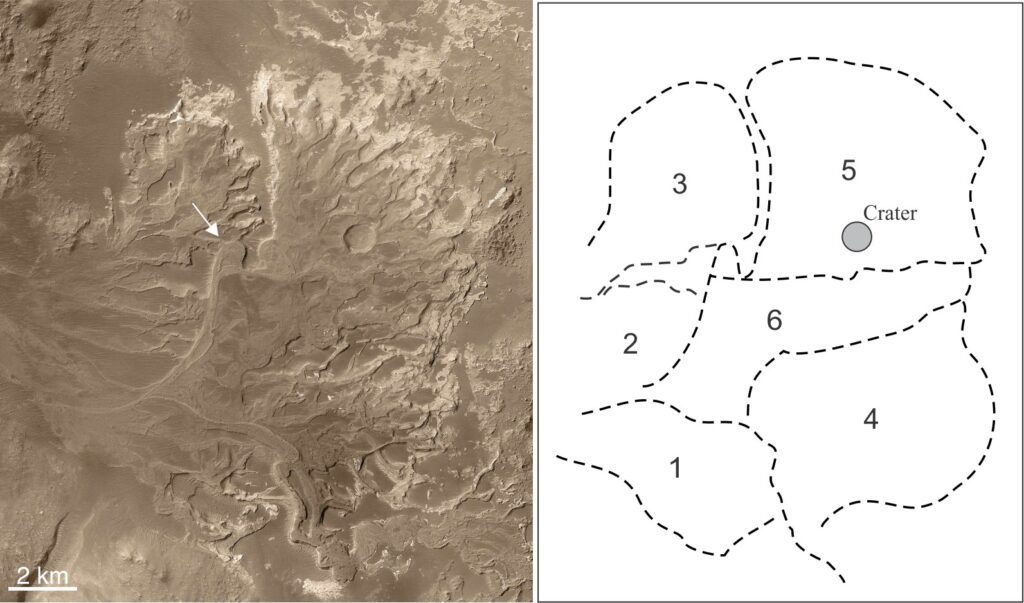
- Alluvial fans: Most impact craters bear some degree of rim incision. Sediment produced by gully erosion accumulated as fan-shaped deposits near the rim base and in many cases extended onto the crater floor. The fans are transected by straight, sinuous, and bifurcating channel structures, commonly preserved as ridges (inverted channels). The overall geometry of the fans and what appear to be sediment feeder channels are very similar to those associated with terrestrial alluvial fans. Smaller fan bodies may also qualify as talus fans. The example shown is an unnamed crater in the Margaritifer Terra region (Hesperian or older). The northern half of the crater contains numerous rim gullies and localized fan bodies. Much larger fans in the southern half of the crater appear to be composite and probably were fed by two or more larger channel systems that breached the crater rim.
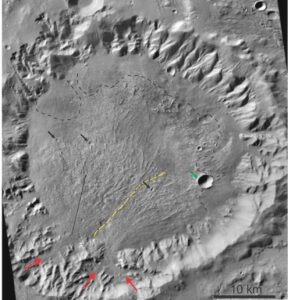
Raw Image credit: NASA Mars Reconnaissance Orbiter CTX B01_009999_1519_ XI_28S027W
- Lithified sand dunes: Ancient dune bedforms are preserved in map view, some remarkably intact retaining the overall large-scale bedform shape, including the lee face. It is possible that the once active dunes were buried rapidly by wind-blown dust and subsequently lithified, perhaps preferentially. Another hypothesis maintains that they were covered by a pebble lag veneer that acted as a protective carapace (Edgett and Sarkar, op cit discuss the options). Other images show the outlines of dunes that appear to have been planed by erosion. An example of truncated, lithified barchan dunes is shown below.
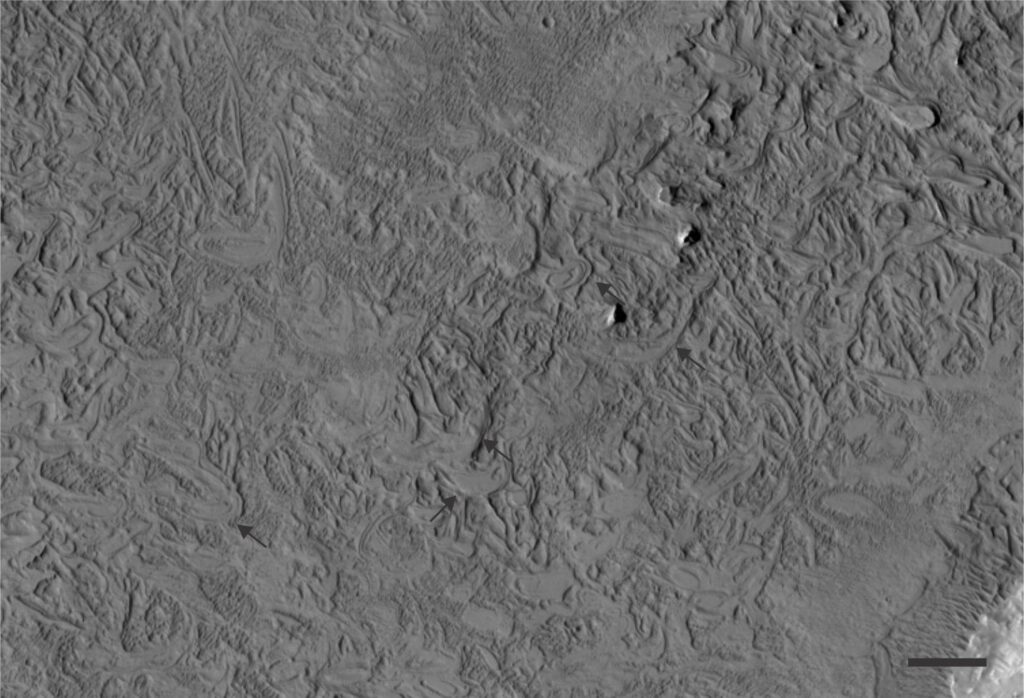
- Spectroscopic analyses of fine-grained lithologies indicate the presence of stratified clays, opaline silica, and sulphates, some interbedded with clastic deposits, others in successions several 10s of metres thick. And like the clastic deposits, beds can commonly be traced laterally for 10s of kilometres.
Evidence from outcrop
The evidence of large-scale sedimentary depositional features visible in many orbiter images is fairly convincing. However, it is the collection of images of exposed rock faces obtained from mobile rovers that allows us to state categorically that sedimentary rocks on Mars exist, and that many were deposited by subaqueous and subaerial processes.
Bedforms: Crossbedding is a hallmark of Earth bound, granular sedimentary rocks. Crossbeds come in many guises, but they all have one thing in common – they are the product of bedload and suspended load transport of (relatively) non-cohesive grains in flowing air, water, sediment-water mixtures (e.g., sediment gravity flows), and high temperature vapour-sediment mixtures (pyroclastic density currents). There is now abundant evidence for crossbedding in Mars rocks. The anatomy of Mars bedforms is comparable to those on Earth in terms of their:
- Dimensions – millimetre to decametre scale, e.g., ripples to large dune bedforms,
- Geometry – symmetrical and asymmetrical profiles, lee (avalanche) and stoss faces, and straight, arcuate, or sinuous crests,
- Basal contacts – planar, concave, commonly truncated,
- Foreset geometry – planar, concave, with abutting and tangential basal contacts,
- Stratigraphic changes in crossbed type and size –that indicate changes in hydraulic conditions such as ripples to plane-bed, or large dune-forms to ripples.

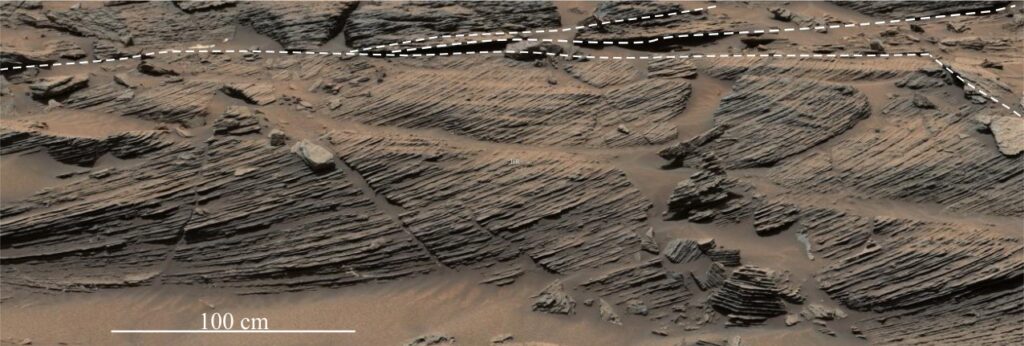
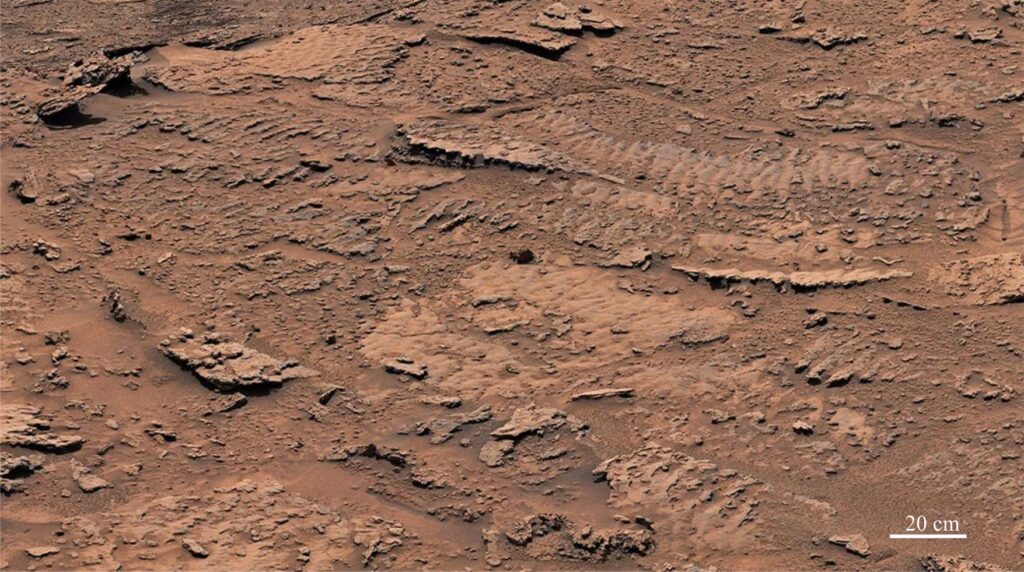
Conglomerates: Most conglomerates found in the Martian rock record (so far) are of limited thickness and extent. The example shown here may be a channel floor deposit. It contains clasts up to pebble size. High degrees of clast rounding indicate abrasion from sustained flow. Isolated outcrops elsewhere in Gale crater contain boulder-sized clasts (20+ cm).
A cautionary note – deflation of sediment that exposes (diagenetic) concretions can also produce gravel-like lags.
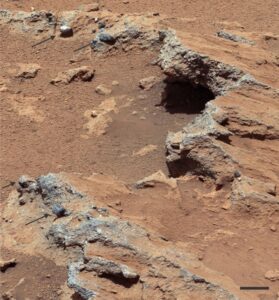
Texture and grain-size: Modern wind-blown deposits consist of dust-sized to medium-grained sand sized material. The inset image near the top of this page was taken by Curiosity’s hand-lens camera (MAHLI), and shows a well-sorted sand, mostly in the grain-size range 0.25-0.5 mm. Most grains show some degree of rounding. The sand was likely sourced from the breakdown of surface rocks, including ancient sandstones and basalts.
MAHLI (Curiosity rover) views of indurated rocks also reveal granularity in sandstones although detailed textural properties are commonly masked by diagenetic features, such as cements or dissolution of labile components. Diagenetic products include sulphates, chlorides, clays, and opaline silica. Siderite has also been found although it is likely the product of late diagenesis (Tutolo et al., 2025).
Disruption of primary depositional textures by crystal growth has been documented from Opportunity rover images of sulphate-rich sandstones (McLennan et al., 2005). McLennan et al., also cite evidence for secondary porosity formed by dissolution of unstable detrital components – a process that effectively removes some of the primary textural evidence.

Other posts in this series
Martian stratigraphy – the framework
Stratigraphy of the rocky planets
